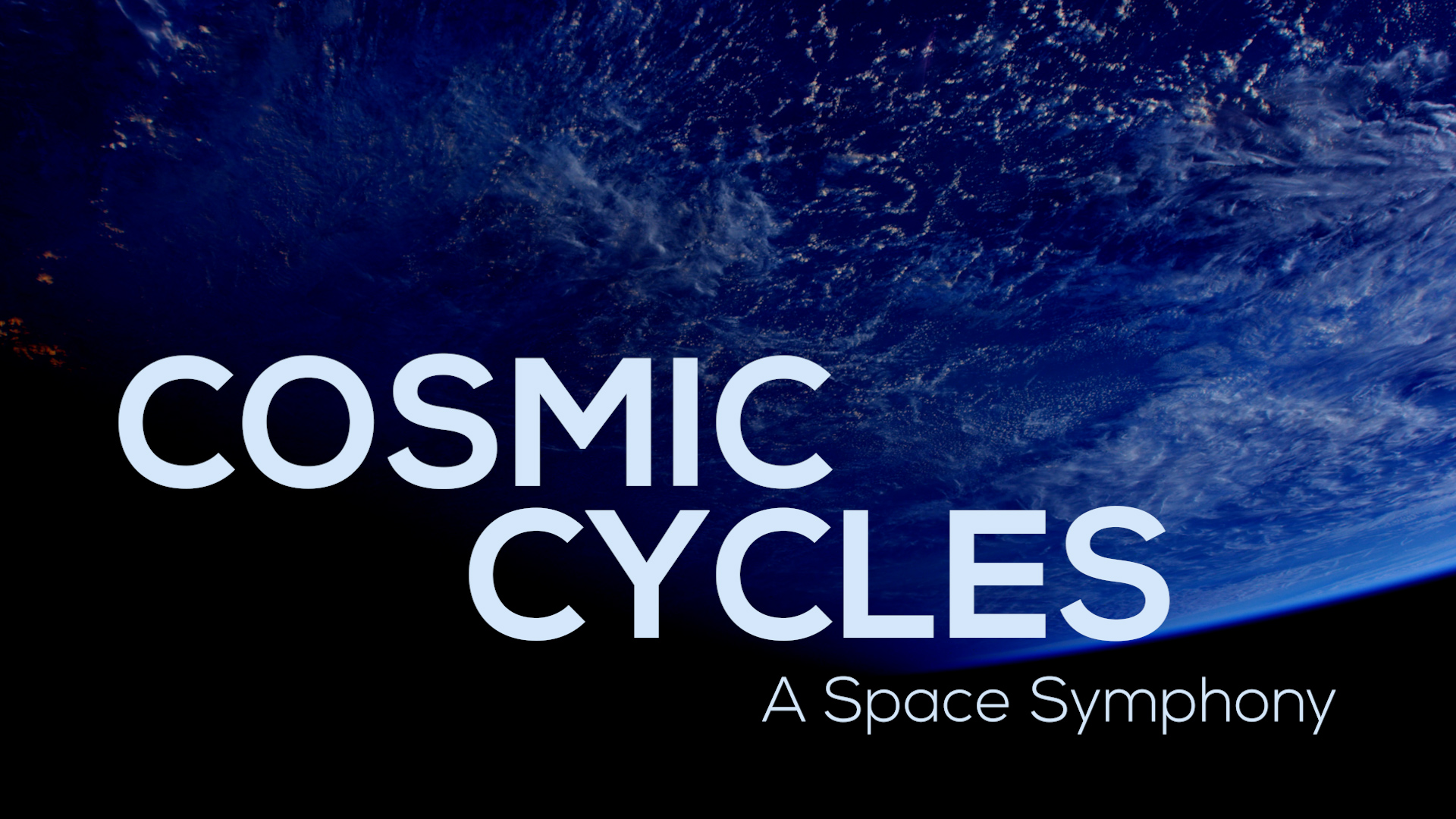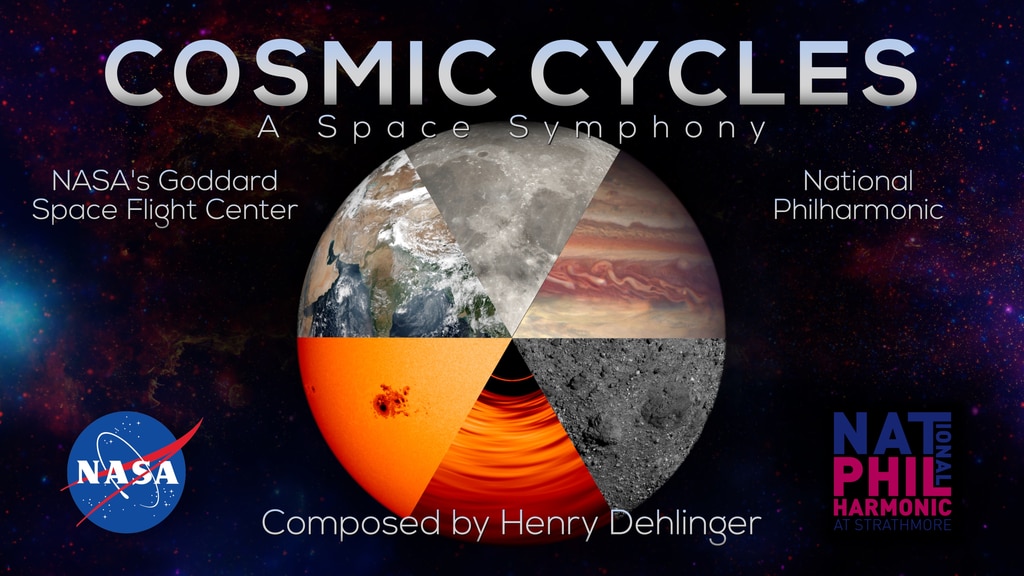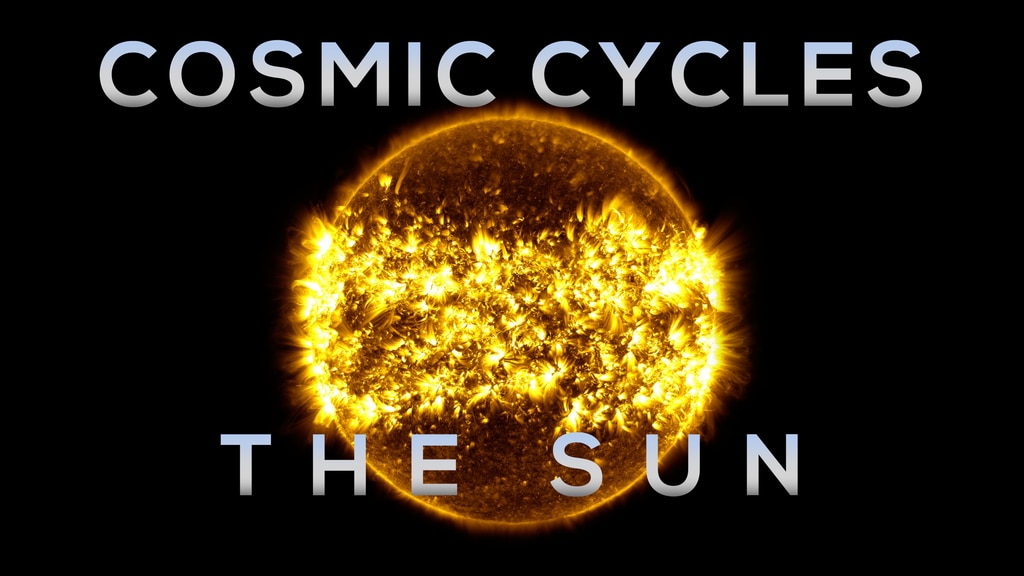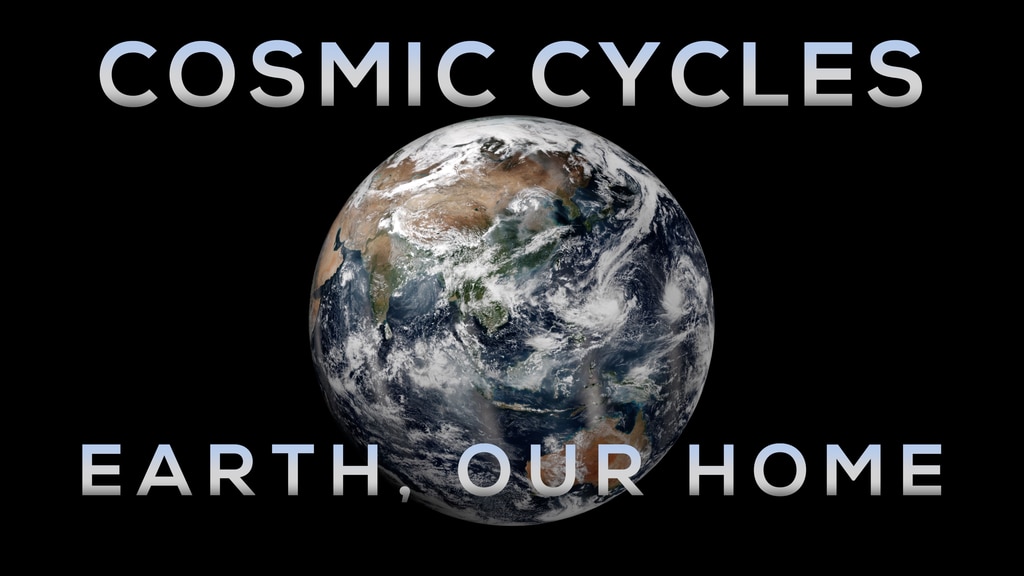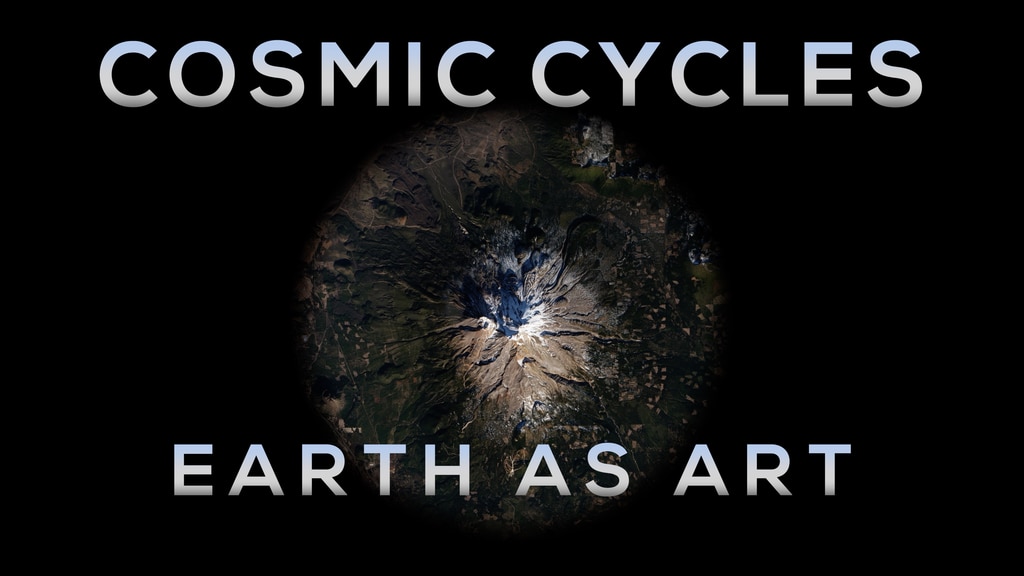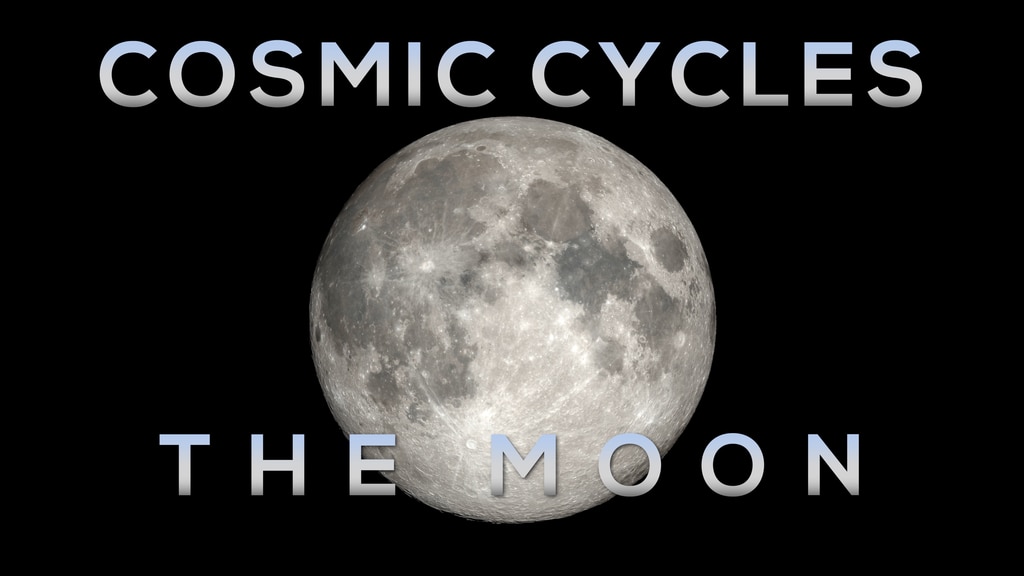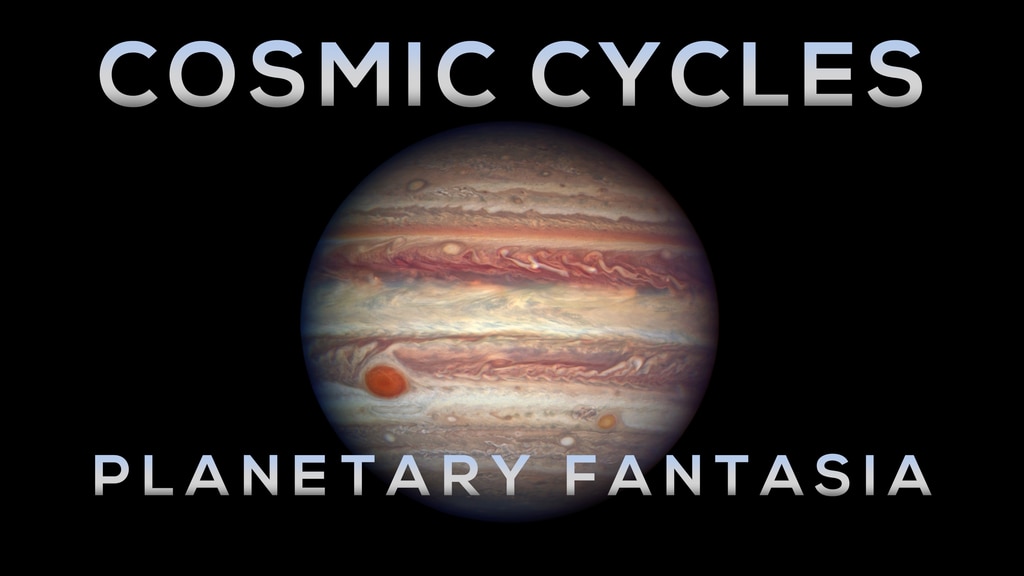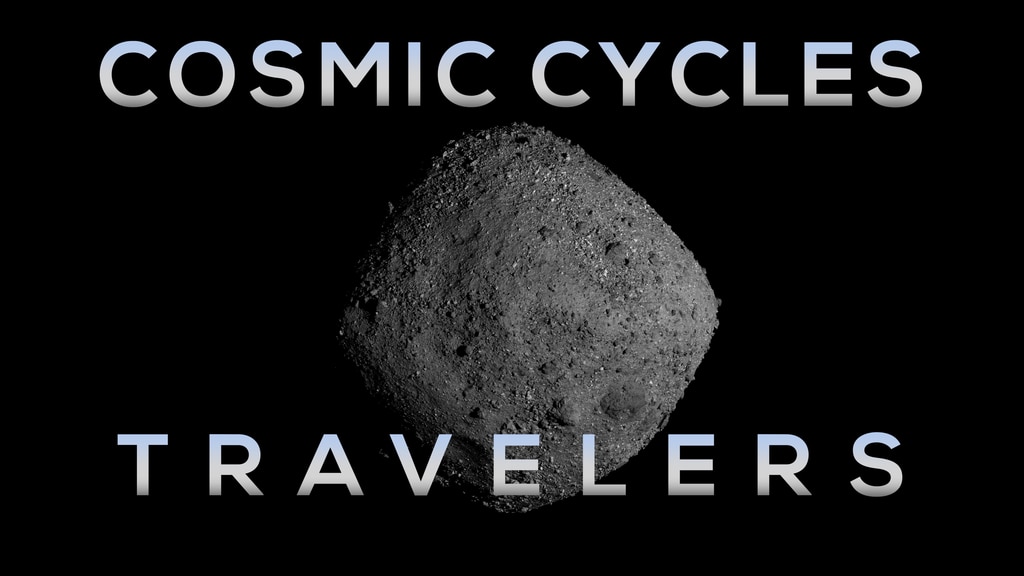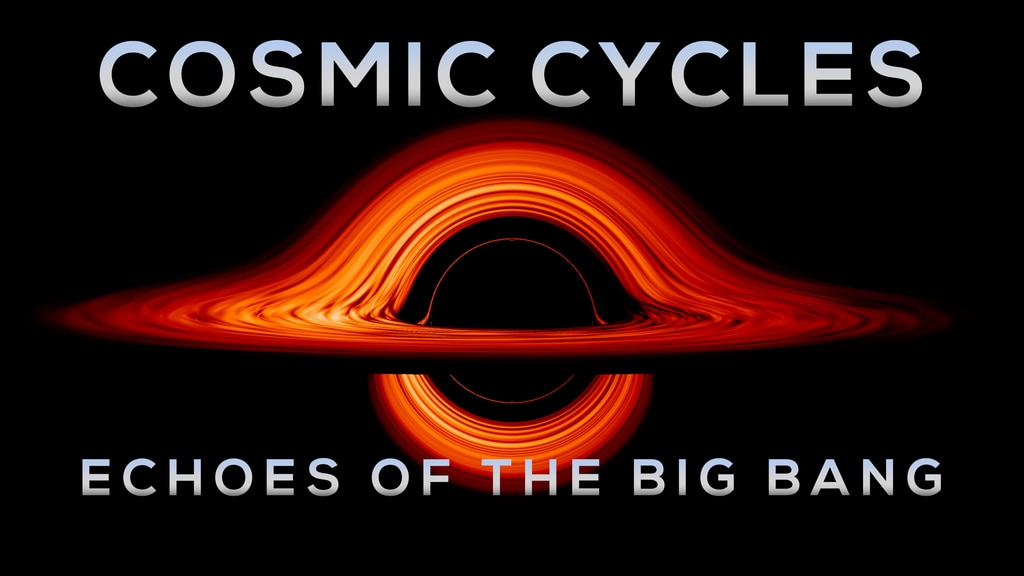COSMIC CYCLESA Space Symphony
Overview
Cosmic Cycles is a collaboration between NASA's Goddard Space Flight Center, the National Philharmonic Orchestra, and composer Henry Dehlinger. Conceived by executive producer Wade Sisler, six NASA producers and visualizers shared their creative visions of NASA's many areas of research. Henry Dehlinger took these silent videos and composed new music to accompany them. This fusion of visual and auditory creative works generates an experience that exceeds either one alone.
Presented here are is the complete symphony of seven movements, progressing from the Sun, to Earth, past the Moon, through the solar system and into the farthest reaches of the universe. The videos are paired with computer-generated versions of the full orchestration and are available for download in multiple formats, including master quality.
This gallery also contains links to collections of the visuals that make up each video, allowing anyone access to the same resources that the original artists used.
Click here for a Flickr gallery of images from the world premiere performance by the National Philharmonic.
The Symphony
Cosmic Cycles Teaser
Go to this page"Cosmic Cycles: A Space Symphony" is a groundbreaking collaboration between acclaimed composer Henry Dehlinger, NASA, and the National Philharmonic, featuring a unique fusion of music and video in seven multimedia works on the Sun, Earth, Moon, Planets, and Cosmos. This transformative project takes the audience on a captivating voyage through the universe, showcasing the beauty and power of the marriage between music and science.Credit: NASA's Goddard Space Flight CenterMusic credit: “Earth, Our Home" from Cosmic Cycles: A Space Symphony by Henry Dehlinger. Courtesy of the composer.Watch this video on the NASA Goddard YouTube channel.Complete transcript available. || Cosmic_Cycles_Teaser_Still_copy.jpg (1920x1080) [746.4 KB] || COSMIC_CYCLES_TEASER_NASA_FINAL.mov (1920x1080) [1.3 GB] || COSMIC_CYCLES_TEASER_NASA_FINAL.mp4 (1920x1080) [161.2 MB] || COSMIC_CYCLES_TEASER_NASA_FINAL.webm (1920x1080) [12.4 MB] ||
Cosmic Cycles: A Space Symphony
Go to this pageThe complete Cosmic Cycles symphony. All seven movements paired with music composed by Henry Dehlinger and generated electronically.p> || Cosmic_Cycles_Concert_Complete_PieV2_print.jpg (1024x576) [147.9 KB] || Cosmic_Cycles_Concert_Complete_PieV2.jpg (3840x2160) [1.1 MB] || Cosmic_Cycles_Concert_Complete_PieV2_searchweb.png (320x180) [98.0 KB] || Cosmic_Cycles_Concert_Complete_PieV2_thm.png (80x40) [8.0 KB] || Cosmic_Cycles_Complete_Symphony_OnlineProResLT_1920x1080_2997.mov (1920x1080) [45.6 GB] || Cosmic_Cycles_Complete_Symphony_Online_1080.mp4 (1920x1080) [6.4 GB] || Cosmic_Cycles_Complete_Symphony_Online_small.mp4 (1920x1080) [2.8 GB] || Cosmic_Cycles_Complete_Symphony_Online_1080.webm (1920x1080) [591.5 MB] ||
1 The Sun
Cosmic Cycles 1: The Sun
Go to this pageThis video includes music from a synthesized orchestra provided by composer Henry Dehlinger.Music credit: "The Sun" from Cosmic Cycles: A Space Symphony by Henry Dehlinger. Courtesy of the composer.Complete list of footage used HERE.Watch this video on the NASA Goddard YouTube channel. || Cosmic_Cycles_The_Sun_V2_print.jpg (1024x576) [103.2 KB] || Cosmic_Cycles_The_Sun_V2.jpg (3840x2160) [859.1 KB] || Cosmic_Cycles_The_Sun_V2_searchweb.png (320x180) [51.8 KB] || Cosmic_Cycles_The_Sun_V2_web.png (320x180) [51.8 KB] || Cosmic_Cycles_The_Sun_V2_thm.png (80x40) [5.6 KB] || Cosmic_Cycles-The_Sun_Online_ProRes_1920x1080_2997.mov (1920x1080) [10.1 GB] || Cosmic_Cycles-The_Sun_Online_50mbps.mp4 (1920x1080) [3.6 GB] || Cosmic_Cycles-The_Sun_Online_50mbps.webm (1920x1080) [92.6 MB] || Cosmic_Cycles-The_Sun_Online_1080.mp4 (1920x1080) [1.5 GB] ||
Cosmic Cycles 1: The Sun
Go to this pageBorn from a swirling cloud of dust and gas some 4.6 billion years ago, our Sun seethes and boils like a living thing. It is the very center of our solar system, and large enough to encompass 1.3 million Earths. Explosions flash on its surface in colors of light beyond human vision and enormous loops of plasma stretch into space. The Sun’s influence extends out beyond the planets, creating a protective cocoon within the galaxy. Want to know more?
SDO Gallery SDO website NASA Heliophysics Home Page
2 Earth Our Home
science.nasa.gov/earth-science
Cosmic Cycles 2: Earth, Our Home
Go to this pageThis video includes music from a synthesized orchestra provided by composer Henry Dehlinger.Music credit: “Earth, Our Home" from Cosmic Cycles: A Space Symphony by Henry Dehlinger. Courtesy of the composer.Watch this video on the NASA Goddard YouTube channel. || Cosmic_Cycles_Earth_Our_Home_V2_print.jpg (1024x576) [85.8 KB] || Cosmic_Cycles_Earth_Our_Home_V2.jpg (3840x2160) [715.2 KB] || Cosmic_Cycles_Earth_Our_Home_V2_searchweb.png (320x180) [48.3 KB] || Cosmic_Cycles_Earth_Our_Home_V2_thm.png (80x40) [5.7 KB] || CosmicCycles_Earth_With_Music_1920x1080_30fps.mov (1920x1080) [17.9 GB] || CosmicCycles_Earth_With_Music_1080.mp4 (1920x1080) [1.3 GB] || CosmicCycles_Earth_With_Music_1080.webm (1920x1080) [100.5 MB] || CosmicCycles_Earth_With_Music_50mbps.mp4 (1920x1080) [4.0 GB] ||
Cosmic Cycles 2 Earth Our Home
Go to this pageOur home and the only planet we know of to possess life. In the years since we first managed to leave its atmosphere, our understanding of it has grown exponentially. NASA now observes and measures Earth with an unmatched fleet of spacecraft. Our influence on this incredibly complex and ever-changing sphere is both obvious and insignificant.
3 Earth as Art
Cosmic Cycles 3: Earth as Art
Go to this pageThis video includes music from a synthesized orchestra provided by composer Henry Dehlinger.Music credit: “The “Earth as Art" from Cosmic Cycles: A Space Symphony by Henry Dehlinger. Courtesy of the composer.Watch this video on the NASA Goddard YouTube channel. || Cosmic_Cycles_Earth_as_Art_V2_print.jpg (1024x576) [76.6 KB] || Cosmic_Cycles_Earth_as_Art_V2.jpg (3840x2160) [720.7 KB] || Cosmic_Cycles_Earth_as_Art_V2_searchweb.png (320x180) [45.0 KB] || Cosmic_Cycles_Earth_as_Art_V2_thm.png (80x40) [5.2 KB] || Cosmic_Cycles-Earth_as_Art_Online_ProRes_1920x1080_2997.mov (1920x1080) [5.8 GB] || Cosmic_Cycles-Earth_as_Art_Online_50mbps.mp4 (1920x1080) [1.9 GB] || Cosmic_Cycles-Earth_as_Art_Online_1080.mp4 (1920x1080) [642.8 MB] || Cosmic_Cycles-Earth_as_Art_Online_1080.webm (1920x1080) [47.5 MB] ||
Cosmic Cycles 3 Earth as Art
Go to this pageStarting in 1972, nine Landsat satellites have orbited Earth, taking images of the surface. This unprecedented coverage has been tremendously useful to the scientific community, but it has also produced thousands of beautiful high-resolution images of the complex patterns of our world. From the fractal patterns of mountain ranges and river deltas to the precise geometry of agriculture, Landsat has rendered Earth as a work of art.
4 The Moon
Cosmic Cycles 4: The Moon
Go to this pageThis video includes music from a synthesized orchestra provided by composer Henry Dehlinger.Music credit: “The Moon - Our Desolate Companion" from Cosmic Cycles: A Space Symphony by Henry Dehlinger. Courtesy of the composer.Watch this video on the NASA Goddard YouTube channel. || Cosmic_Cycles_The_Moon_V2_print.jpg (1024x576) [64.5 KB] || Cosmic_Cycles_The_Moon_V2.jpg (3840x2160) [548.7 KB] || Cosmic_Cycles_The_Moon_V2_searchweb.png (320x180) [41.2 KB] || Cosmic_Cycles_The_Moon_V2_thm.png (80x40) [5.3 KB] || MoonCosmicCycles_wMusicH264.mp4 (1920x1080) [1.3 GB] || MoonCosmicCycles_wMusicHiBit.mp4 (1920x1080) [3.1 GB] || MoonCosmicCycles_wMusicMASTER.mov (1920x1080) [12.8 GB] || MoonCosmicCycles_wMusicH264.webm (1920x1080) [80.3 MB] ||
Cosmic Cycles 4 The Moon
Go to this pageOur constant companion in space, the Moon is the only celestial object that humanity has visited in person. Although by eye the Moon’s surface looks flat and unchanging, recent measurements have shown it to be a rugged and dynamic environment. The most familiar object in the night sky, the Moon is our stepping stone to the rest of the cosmos. Want to know more?
Lunar Reconnaissance Orbiter Gallery NASA Moon
5 Planetary Fantasia
Cosmic Cycles 5: Planetary Fantasia
Go to this pageThis video includes music from a synthesized orchestra provided by composer Henry Dehlinger.Music credit: “Planetary Fantasia" from Cosmic Cycles: A Space Symphony by Henry Dehlinger. Courtesy of the composer.Watch this video on the NASA Goddard YouTube channel. || Cosmic_Cycles_Planetary_Fantasia_V2_print.jpg (1024x576) [60.4 KB] || Cosmic_Cycles_Planetary_Fantasia_V2.jpg (3840x2160) [465.1 KB] || Cosmic_Cycles_Planetary_Fantasia_V2_searchweb.png (320x180) [40.9 KB] || Cosmic_Cycles_Planetary_Fantasia_V2_thm.png (80x40) [5.2 KB] || Cosmic_Cycles-Planetary_Fantasia_Online_ProRes_1920x1080_2997.mov (1920x1080) [10.9 GB] || Cosmic_Cycles-Planetary_Fantasia_Online_50mbps.mp4 (1920x1080) [3.5 GB] || Cosmic_Cycles_Planetary_Fantasia.mp4 (1920x1080) [415.1 MB] || Cosmic_Cycles_Planetary_Fantasia.webm (1920x1080) [98.0 MB] ||
Cosmic Cycles 5 Planetary Fantasia
Go to this pageEarth’s siblings, the other planets were created at the birth of the solar system. They give us a glimpse of the variety possible in the universe and how rare Earth is. As we explore these other worlds, we fuel our adventurous spirit and discover new wonders at every turn: riverbeds on Mars, volcanoes on Jupiter’s moon Io, auroras on Saturn, and sulfuric-acid clouds on Venus.
6 Travelers (DART and OSIRIS-REx)
Cosmic Cycles 6: Travelers (DART and OSIRIS-REx)
Go to this pageThis video includes music from a synthesized orchestra provided by composer Henry Dehlinger.Music credit: “Travelers" from Cosmic Cycles: A Space Symphony by Henry Dehlinger. Courtesy of the composer.Watch this video on the NASA Goddard YouTube channel. || Cosmic_Cycles_Travelers_V2_print.jpg (1024x576) [72.5 KB] || Cosmic_Cycles_Travelers_V2.jpg (3840x2160) [721.7 KB] || Cosmic_Cycles_Travelers_V2_searchweb.png (320x180) [32.7 KB] || Cosmic_Cycles_Travelers_V2_thm.png (80x40) [4.7 KB] || Cosmic_Cycles-Travelers_Online_ProRes_1920x1080_2997.mov (1920x1080) [5.8 GB] || Cosmic_Cycles-Travelers_Online_50mbps.mp4 (1920x1080) [1.8 GB] || Cosmic_Cycles_The_Travelers.mp4 (1920x1080) [238.5 MB] || Cosmic_Cycles_The_Travelers.webm (1920x1080) [57.4 MB] ||
Cosmic Cycles 6 Travelers
Go to this pageNomads of the solar system, small objects like asteroids and comets wander among the planets. Messengers from the distant past, many of these small bodies include debris from the formation of the solar system and carry clues about its origins and the rise of life on Earth. NASA has visited some of them, recently reaching and then touching the asteroid Bennu to collect samples of rock unchanged for nearly 5 billion years.
7 Echoes of the Big Bang
Cosmic Cycles 7: Echoes of the Big Bang
Go to this pageThis video includes music from a synthesized orchestra provided by composer Henry Dehlinger.Music credit: “Echoes of the Big Bang" from Cosmic Cycles: A Space Symphony by Henry Dehlinger. Courtesy of the composer.Complete list of footage usedHERE. Watch this video on the NASA Goddard YouTube channel. || Cosmic_Cycles_Echoes_of_the_Big_Bang_V2_print.jpg (1024x576) [73.5 KB] || Cosmic_Cycles_Echoes_of_the_Big_Bang_V2.jpg (3840x2160) [511.8 KB] || Cosmic_Cycles_Echoes_of_the_Big_Bang_V2_searchweb.png (320x180) [40.4 KB] || Cosmic_Cycles_Echoes_of_the_Big_Bang_V2_thm.png (80x40) [5.4 KB] || Cosmic_Cycles-Echoes_of_the_Big_Bang_Online_ProRes_1920x1080_2997.mov (1920x1080) [14.7 GB] || Cosmic_Cycles-Echoes_of_the_Big_Bang_Online_1080.mp4 (1920x1080) [1.7 GB] || Cosmic_Cycles-Echoes_of_the_Big_Bang_Online_50mbps.mp4 (1920x1080) [4.1 GB] || Cosmic_Cycles-Echoes_of_the_Big_Bang_Online_1080.webm (1920x1080) [130.2 MB] ||
Cosmic Cycles 7: Echoes of the Big Bang
Go to this pageNASA studies the makeup and workings of the universe, from the smallest particles of matter and energy to its large-scale structure and evolution. Scientists look far back in space and time to learn the full cosmic history of stars and galaxies. They tease out details of the environments around black holes and observe the most powerful explosions since the big bang. NASA is discovering numerous planets beyond our solar system, decoding how planetary systems form, and learning how environments hospitable for life develop. Want to know more?
NASA Universe Webb Space Telescope images Hubble Space Telescope
